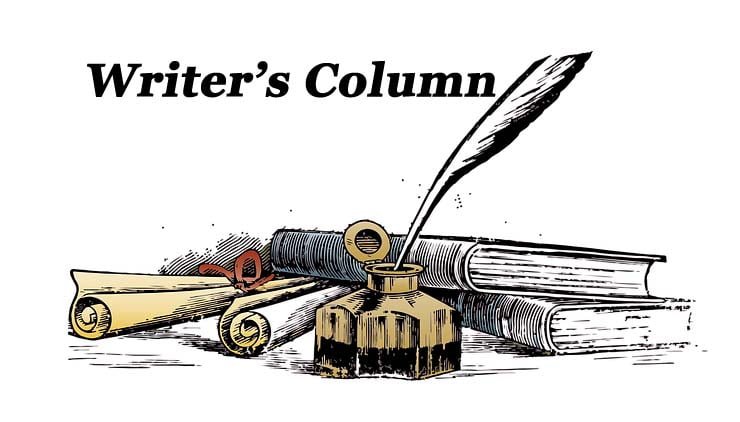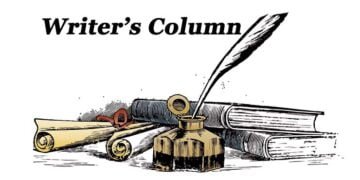Avalanche of information from different academic fields both from within and without this community shared their insights about us. The latest and interesting ones came from the Anthropological sources (history) telling us about the physical journey of ancestors from other places, including the excavatory findings at U Lum Sohpetbneng, and etc. These are some of the apparent aspects, and nothing more. The way of life, the Cultural practices is still the least explored sphere. If there’s a book that can truly represent this culture, its people, the museums would be the most suitable sanctuary. Thus, what we write is only a piece of information.
The Essence: I was once asked -“what is Khasi culture?”. The answer was – “over there in the ocean are waves, big and small. In one moment they rise, the next moment they melt down into the noumenon”. These waves are the mores, customs and traditions followed by ancestors, and are subjected to changes. These waves, these phenomena breathe in from the formless noumenon which we can call “the knowledge system of the tribe.
Reality is what it is; whether we know it or not, nothing matters – we are the puppets dancing around its tune. Intellectuals die out like ordinary souls. Where words stop, it’s reality’s turn to express. An elder from Mawchuit said -“ki khelleng hwa bang khapai ki, lah mew lypa”, meaning “the babies before they talk, it’s already known”. That man, with his knowledge, is our philosopher, except for the fact that he has never seen a school.
Let’s admit that we of the present are idolaters who worship the forms – physical and intellectual, and not the ideal. There are hundreds of charming flowers, but the “Tiew Dohmaw”, “Tiew Lyngksiar” stand out far above. The former symbolises internal contentment; the latter, the sweet scent felt from afar. Both of them are modest, wild flowers.
Our Origin: I asked elders about our origin. Unlike what’s received from anthropological history, they say they know nothing about where they came from ; neither do they give an iota of the mind to think over it. One said -“kaba ym ïa tip lut da baroh, naduh kunlung, haduh tymmen, kam dei ka bashisha” meaning-“what’s not known by all, from babies to the olds, is not a reality”. I told another one about the artifacts found in U Lum Sohpetbneng. His sarcastic answer surprised me when he said – “kyrmen kin lap sa ïa ka ksiar ruh namarba ngi wan lyngba ka Jingkieng Ksiar”, meaning – hope they will find the gold as well because we came down to earth through the golden ladder.
He went on saying -“Ka Khanatang hangtei ka dei ka pharshi jong jingpynpura ïa ka nishan Blei. Lada thoh ïa ka ha uno uno u Lum ruh ka jingmut kan sah hi kumjuh. Ngim dei ki nong mane lum”- which means – the story is a metaphor about the consummation of the cosmic design. If it was written on any hill, the essence would be the same. We are not the worshippers of hills (forms). He warned, saying that the future generations will hear only a selected part of the stories hidden in the legends. He went on saying that these are not their problems; they are natural things.. Once we lose touch with the Divine healing tradition, thousands of interpretations will come.
Spirituality: Every human from the beginning of existence, was a born atheist. It’s only the bombardment of information that made us change our hearts. At the age of ten, I was thrown out of the classroom for not being able to answer the questions- “who is god”, “who made us”. So I was an atheist in my childhood days. One young man from a traditional village said -“uba dang wad Blei dei tang uba khlem Blei”-which means -“they who still search for God, are godless”. In our modern times we speak of God, the Essence, more than once. To ancestors, Spirituality is the inherent ontological nature of humans and all co-inhabitants of Nature. Selling it to fellows is tantamount to blasphemy; an absence of faith in the quintessential holiness, goodness in a human person.
Who then is spiritual? Though we don’t have the specific terms for the above, we can say that one with such a quality is one who leads a peaceful life without asking others to do the same; no shadow of patronisation. That’s the era of living in innocence, peace which humanity is hankering after; it’s our birthright. In my traditional, ancestral villages of my parents, qualifying another as good, bad, spiritual, one has to have prior knowledge of the ensuing question of- “who are you to say I am because you say I am?”. Do we know the weight of the question!. This is the Culture that was, and is still being branded as “backward”. The author, Ramachandran Guha, foreign by geography, in his book titled -“Savaging The Civilised”, hit the nail on the head.
What do we call our ancestors?: We are a race that sees God through the lens of ancestry and the coexistence in Nature. – Those ancestors are revered and lovingly addressed as : Meimen-pamen, Thawlang-Ïawbei, Mei blei-pa blei, Mei bahok-pa Bahok etc. Then we have “ka ‘Lei Longkur-‘Lei Longkha” respectively – those ancestors who now are in the spiritual realm, are the ones who once upon a time participated and are still participating in our present life. They are our guardians actively breathing in us. We see the Godhead through them. This is our perpetually flowing stream of history.
Are we Matrilineal only?: No, we are not. Though we bear the surnames from the line of mothers, yet the honour we give to the “Nongkha”, “ki kha” -those from the line of father, is much more than what’s been known or heard about us. “Ka nguh Meikha” is a sacred act of honouring the father’s mother on her death, and speaks of where the scale tilts. So it’s the same with the fathers, his siblings whom we call “ki Ñiakha”. Out here, the grand nephews, nieces of the father are highly respected and we never call them by names – the females are the “Kha-lungs” etc, and the males are the “Pa-lungs” etc. Adding on to this legacy, we have what we call -“Meikha blei” the Divine grandmother from father’s side, “Pa blei” divine fathers, and “Ñiakha blei” the Divine father’s sisters.
The Kñi system: With the eclipse of the era of the Uncles as an institution, many felt we have lost everything as a people, and turned to the new faith for redemption. Our ancestors never believed in redeemers of human origin who still undergo the same life experiences ; neither is there a thing that needs it. What have we lost, then?. Nothing’s lost.
Here lies the crux to the question – The uncle, though he occupies the august position in the clan, he’s subservient to the will, recognition of the same. He fades, the moment the clan, as an institution disintegrates. As to why it wanes, the answer lies within the institution itself. The major works done by the uncles was to save life in the periods when life was in danger, owing to which religions were founded. At the centre of these acts were the gods known as the Ryngkew-Basa (the spirits living on land, preserving life living on land).
This religion is no longer common except in some villages, in some areas of our hills. In course of time, life became more secure, thus affecting the fading of religions from clan level and village, cluster of villages levels, etc. What tradition is then left with us? The answer to this is simple: we still have the father, the institution canonised by the altar of the Creator, and not by any human institution. The foundation lies in this: “the lifeblood of ‘ki Nongkha’ (the father’s side) that is flowing in the children, is what’s been sanctioned, sanctified by the ultimate Law”. This life blood is the knowing-knower of our being, and is known to all that make up this Nature, this Cosmos.
Ka Niam ka dei ka nia ka ba-im (religion is a living word): This is a big statement and is hovering over many from the 1980s, an effect of which has led the confused indigenous people to turn away from secular living. It’s used in special occasions related to religion. The message it sends to the masses is : docile acceptance of whatever is connected with religion. A thing such as this wouldn’t escape the questions of ancestors who were not driven by fear of the unknown; that’s what makes a difference between the seers of reality and us the moderns.
I came across elders who know the weight of a statement before we complete a sentence. One step to the door of this mystery is: what makes a word a living word? This must be answered; and here is the answer: “ym baroh ki jingkren, wat la ki sma shong blei, kim leit sot sha duwan ka Hok”. A meaningful translation goes as -“not all words, however divine they may ring (in the context of communication to the law) , bear guarantee of being accepted by the Altar of the Essence. Why? The answer is: “dei tang ka nia kaba don Jutang na Blei” -it’s only a word that commensurate with the cosmic design”.
What’s this that commensurate with the cosmic design? Example answer: ancestors communicate to the law only when life is in undue threat, or deducted from its perfection owing to diseases or unnatural intervention of coexistence. Eating, working, sleeping etc are the embedded ontological values of ours that preserve and sustain life. If these are out of order, then they seek a reason through divination and followed by pleading to the same Law of life. From this principle breathed in our ancestral religions which can be clan, village-based, etc. No museums can represent this culture.

























